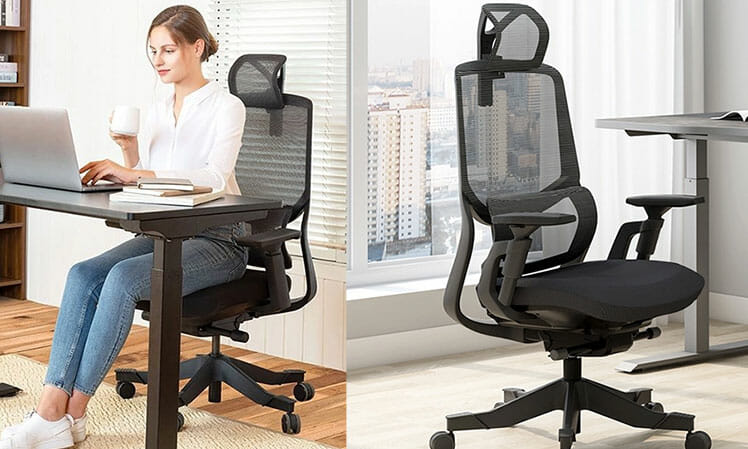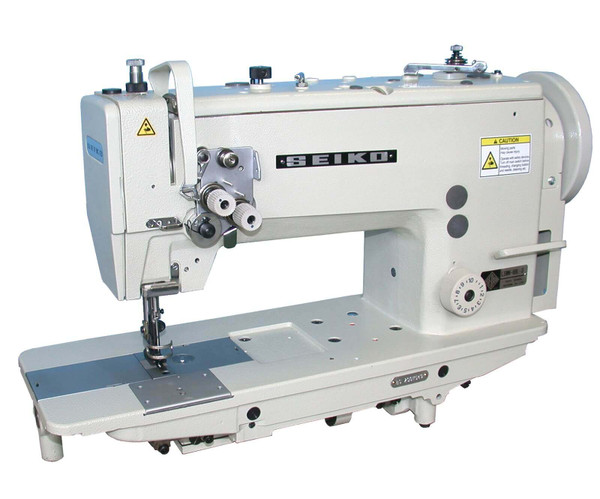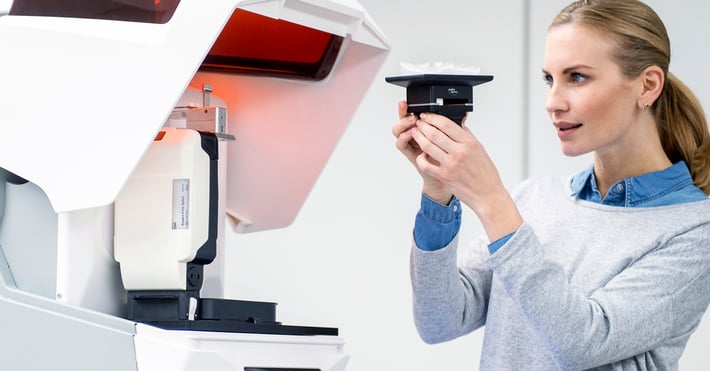Features of an Ergonomic Chair
On October 7, 2021 by Morthe StandardTraditional office chairs come in various colours and patterns, but they all have the same drawbacks: poor flexibility, low adaptability, and inadequate support. Using a chair with multiple ergonomic qualities, such as creating a healthy posture appropriate for each individual’s body, lowering the impact on the spine, and supporting your spine curves, helps workers feel more comfortable while working. Workers can change the height of their chairs so that their feet are rested on the floor, or the footrest and their thighs are parallel to the floor and adjust the armrests so that their arms gently rest on them and their shoulders are relaxed. Well, that’s where the ergonomic chair comes in handy.
Table of Contents
Why Do You Need This Chair In The First Place?
It’s a well-known reality that life has gotten almost sedentary over the last 50 years or so. Jobs requiring moderate physical activity have decreased by 30%, but jobs requiring long sitting periods have expanded significantly.
It has coincided with an unprecedented rise in joint and muscle discomfort cases, which is linked to this stagnant working environment. The incorrect chair height, hunching forward, and other variables connected to poor office seating can cause back, shoulder, neck nerve, muscle, and joint problems. Poor seating positions can have a harmful influence on the body right away. It usually puts a lot of stress on the spine at first, creating pain in the backbone’s structures.
So, what are the features of this chair?
Height of Your Seat
At least, a chair’s seat height must be adjustable for it to be considered ergonomic. The height of your seat must be adjusted so that your knees are above or at the same level as your hips and both feet are comfortably flat on the ground beneath you.
Height of the Backrest
When it comes to office ergonomic solutions, the importance of lumbar support cannot be overstated. It is an important aspect of practical ergonomics. Nobody is built the same way. By raising or lowering the lumbar pad to fit itself perfectly with the small of your spine, you can ensure the best support for your back with backrest height adjustment. This feature of the ergonomic chair will keep your back relaxed and free of strain, resulting in a healthy spine that will prevent future pains and issues.
Back Angle
Sometimes, what you must do is take a break and relax. Back angle adjustment (or more often known as the back of the chair) is a popular ergonomic chair feature that allows you to modify the angle of your backrest to the most comfortable position at any given time. It’s recommended that you adjust the angle of your recline as much as possible during the day or that you leave the reclining feature unlocked so that it varies organically in reaction to your every motion. This will keep you from sitting in the same position for an extended period, which would otherwise put too much pressure on your spine.
Support For the Arms

A quality chair should include height and width adjustable arm supports (or armrests) so that you can place your arms and enjoy an organic pivoting plane while typing and editing. This allows you to type, plan and edit for extended periods without cramping or the need for stretching. In addition, while typing or editing, an ergonomic armrest chair should allow the user’s arms to rest comfortably while their shoulders are entirely relaxed.
Casters of High Quality
Your entire body weight is supported by a few small wheels beneath you every time you sit down and get out of your chair. That is, if your chair has wheels at all, which an ergonomic chair definitely should! Fake or low-cost casters are prone to breaking with use, whereas high-quality casters will last long and provide optimum support with each use.
Headrest
When it comes to ergonomic seats, a headrest isn’t always an essential element, regardless of whether it’s fixed or adjustable. But, the importance of a headrest cannot be overstated. A simple headrest relieves so much pressure from the neck and shoulders if you’re editing, typing, or reading from your computer displays all day, every day. It’s also a good reminder of how we should lean back into our work seats comfortably.
You’ll feel lighter, more focused on the task at hand, and less likely to acquire a stiff neck as a result of long working hours.
Swivel
Any traditional or ergonomic chair should allow the user to spin to reach different work regions (desks/cupboards) without straining the rest of their body.
You may also like
Recent Posts
 Unleashing AI Power for Small Business Marketing Success
Unleashing AI Power for Small Business Marketing Success Pourquoi Choisir Une Structure En Acier Pour Vos Projets En Afrique ?
Pourquoi Choisir Une Structure En Acier Pour Vos Projets En Afrique ? Top IPTV France Providers: Finding the Best Service for You
Top IPTV France Providers: Finding the Best Service for You The Importance of Innovation Management in Business Success
The Importance of Innovation Management in Business Success How to Measure Lab Diamond Ring Size
How to Measure Lab Diamond Ring Size Web hosting plan: pro and cons of shared hosting and VPS hosting
Web hosting plan: pro and cons of shared hosting and VPS hosting White Sapphire vs. Diamond: The Ultimate Comparison
White Sapphire vs. Diamond: The Ultimate Comparison How Pawnbroking Works: A Step-by-Step Guide to Pawn Loans
How Pawnbroking Works: A Step-by-Step Guide to Pawn Loans GH Express LLC: Your Strategic Partner for Business Success in the U.S.
GH Express LLC: Your Strategic Partner for Business Success in the U.S.Novita Diamonds Shines a Light on Women’s Empowerment with Dress for Success Partnership
Buying Ethereum Down Under: Your Guide to Purchasing ETH in Australia
 Exploring the Brilliance of Lab-Grown Diamonds: Understanding the 4Cs
Exploring the Brilliance of Lab-Grown Diamonds: Understanding the 4Cs Lab Diamonds: The Top Choice for Ethical, Affordable, and Sustainable Brilliance
Lab Diamonds: The Top Choice for Ethical, Affordable, and Sustainable Brilliance SEO Backlink Services and Template Customization by a Pennsylvania SEO Expert
SEO Backlink Services and Template Customization by a Pennsylvania SEO Expert The Sparkle of Sustainability: Lab Grown Diamonds Adelaide
The Sparkle of Sustainability: Lab Grown Diamonds Adelaide
Popular Posts
 Leveraging User Forums and Communities: Online iPhone Selling
Leveraging User Forums and Communities: Online iPhone Selling Why You Should Be Adding Content to Google My Business
Why You Should Be Adding Content to Google My Business 360-Degree Digital Marketing Services: What’s included?
360-Degree Digital Marketing Services: What’s included? What are the Different Types of Marketing?
What are the Different Types of Marketing? 5 Tips for Sharing Files and Information Online
5 Tips for Sharing Files and Information Online 6 Major Factors To Consider Before You Hire Marketing Agencies Auckland
6 Major Factors To Consider Before You Hire Marketing Agencies Auckland First-Time Buyer’s Guide to Industrial Sewing Machines
First-Time Buyer’s Guide to Industrial Sewing Machines Benefits of Hiring a Full Time SEO Specialist
Benefits of Hiring a Full Time SEO Specialist Tips For Effective And Appealing Web Design
Tips For Effective And Appealing Web Design 3 Biggest Strategies That Can Help You Scale Up Your Company
3 Biggest Strategies That Can Help You Scale Up Your Company Using An SEO Consultant To Amp Up Your SEO Strategy During COVID-19
Using An SEO Consultant To Amp Up Your SEO Strategy During COVID-19- What Is The Essence Of Enterprise Resource Management Systems
How To Make Your Air Conditioning Business Ready For Google?
 Why Should You Add Comments To Your Blog?
Why Should You Add Comments To Your Blog?) 3 Reasons Why Forecasting Sales Is Important For Businesses
3 Reasons Why Forecasting Sales Is Important For Businesses
Most Viewed Posts
 API Integration Best Practices: Ensuring Secure and Scalable Solutions
API Integration Best Practices: Ensuring Secure and Scalable Solutions On The Whole Learning Elaborating Open Source API Tools
On The Whole Learning Elaborating Open Source API Tools Eliminate Annoyance By Fixing These Google Drive Problems
Eliminate Annoyance By Fixing These Google Drive Problems Reasons To Kick-Start Node JS Centric Product Development With Full-Swing
Reasons To Kick-Start Node JS Centric Product Development With Full-Swing Reasons Why It Is Important to Select the Best Online Education Platform for a Programming Assignment
Reasons Why It Is Important to Select the Best Online Education Platform for a Programming Assignment 6 Benefits of Using a Good Website Builder
6 Benefits of Using a Good Website Builder Techinques To Take Services For App Developers
Techinques To Take Services For App Developers- Four compelling reasons why the cloud makes it easy is the ideal IoT application
 A Guide To Hiring The Best Web Development Company
A Guide To Hiring The Best Web Development CompanyThe Best Tools For Mobile-First Indexing Strategy Development
